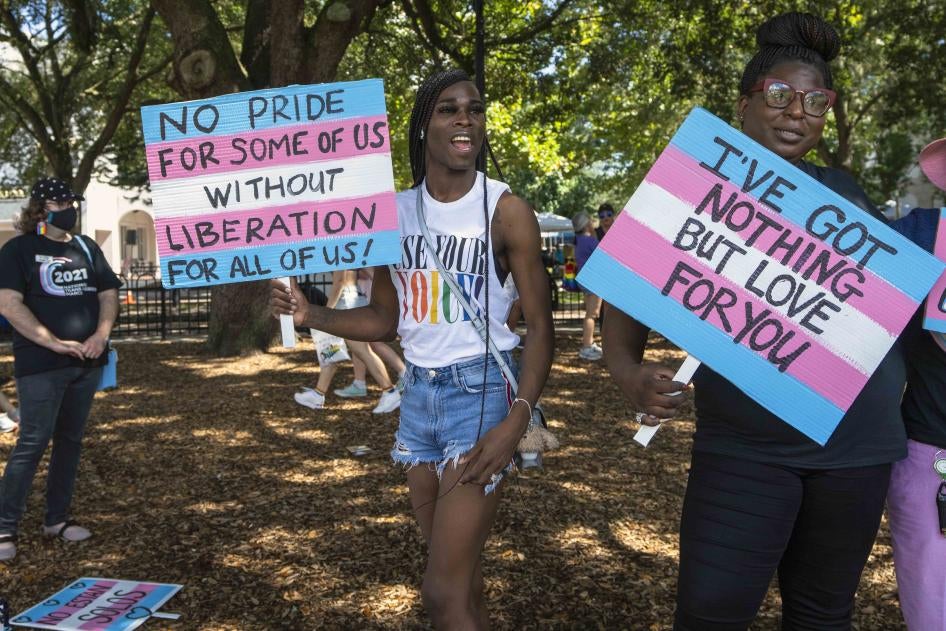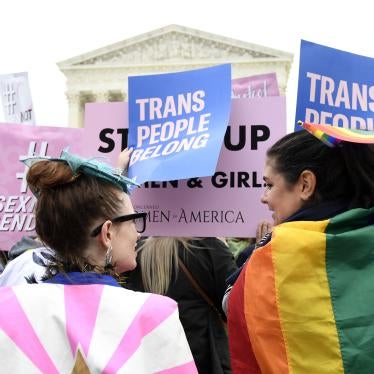As of early November, this year is the deadliest on record for transgender people in the United States, with at least 45 people killed. But their deaths are only the tip of the iceberg. Many other transgender people are subjected to violence and harassment, in public and at home.
Our recent research focused on Florida, Ohio and Texas, three states where dozens of transgender people have been killed between 2016 and 2021. We found that anti-transgender violence is intersectional; risk is shaped by race, gender, class and other factors.
During this period, at least 88 percent of the transgender people killed in Florida, 91 percent in Ohio and 90 percent in Texas were people of color. The majority were Black transgender women, who are most at risk of fatal violence.
Some transgender people who experience violence are targeted or harassed by strangers in public, but others described harassment and abuse at the hands of family members, intimate partners or law enforcement officers — and what they needed most were resources and support.
In part, the high rates of violence that transgender people experience are fueled by public hostility, which some lawmakers have stoked this year. In 2021, a record number of anti-transgender bills were filed in state legislatures — and some passed into law — which demonized transgender people and sought to limit their access to health care, public facilities, and sports and recreation.
Other lawmakers have decried anti-transgender violence, typically by calling for more policing, stronger hate crimes laws, or harsher punishments. But if lawmakers want to address the problem, they need to address the conditions that give rise to it.
The transgender survivors and advocates I met with in Florida, Ohio and Texas described forms of violence that aren’t well addressed by hate crimes prosecution. Even when these prosecutions result in convictions, the state response lacks a survivor-centered, comprehensive approach and many survivors’ needs go unmet.
Addressing the violence requires paying attention to the socioeconomic marginalization and discrimination that put many transgender people in circumstances where they are exposed to harm. According to a survey by the National Center for Transgender Equality, 29 percent of transgender people live in poverty, compared with 12 percent of the U.S. population overall.
Without options, many transgender women engage in sex work and other informal economies, where criminalization puts them at heightened risk of violence by clients and law enforcement and can deter them from seeking assistance when violence occurs.
When people do face violence, the services designed to shield people from harm often fail transgender survivors. In many parts of the country, transgender people do not have access to homeless shelters, domestic violence services, or law enforcement agencies that will provide them meaningful help. Instead, many transgender people report being re-victimized when seeking out a lifeline, being turned away or mistreated because of their gender identity when they are most in need.
The same survey found that nearly a third of those who responded had experienced homelessness at some point in their lives, and one in 10 had experienced homelessness in the previous year.
Many transgender people do not know of shelters that will house them consistent with their gender identity, and when they are able to secure a place, they often face harassment from staff or other residents. Without a safe place to stay or the resources to move, many transgender people are unable to escape situations where they experience violence.
Some people we interviewed said they often felt most at risk when others could perceive that they were transgender and openly disparaged or threatened them. When transgender people are unable to access hormones and other gender-affirming health care, or are unable to update their identification to align with their gender expression, it can increase their exposure to hostility in public.
Protecting people from brutal, often fatal violence should not be controversial. Nonetheless, few states have taken meaningful action to address the circumstances that put transgender people at particular risk. Only 21 states expressly prohibit discrimination based on gender identity in employment, housing and public accommodations, leaving people in many parts of the country without such basic protections.
More can be done. At the federal level, Congress could enact the Equality Act, which would prohibit discrimination based on gender identity in a variety of domains. Lawmakers also should enact bills such as the Family Violence Prevention and Services Improvement Act, which would bolster services for survivors of intimate partner violence and family violence, including transgender survivors.
Condemning violence is not enough. If lawmakers are serious about stopping anti-transgender violence, they must address its roots.
Unless steps are taken to prevent violence from occurring — at a minimum, prohibiting discrimination, providing people with safe employment and housing options, and ensuring that anti-violence services are accessible and affirming — our interventions after the fact are going to be too little, too late.








